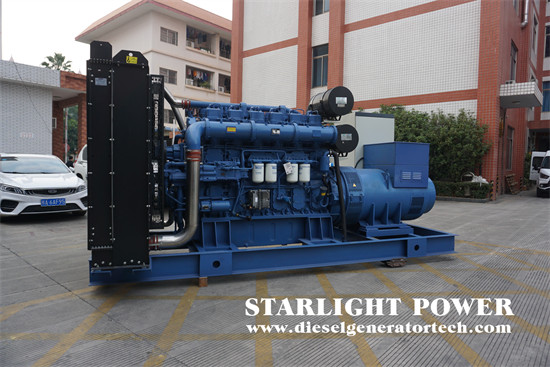As the technical condition of the supercharger of the generator directly affects the power, economy, reliability and exhaust emissions of the engine, it is very important to use the supercharger correctly, maintain the good working condition of the supercharger, prevent its early damage and timely and accurate troubleshooting in the use of the generator.

The commonly used exhaust gas turbochargers are divided into ordinary turbochargers and bypass turbochargers, and bypass turbochargers are commonly used.
The exhaust gas turbocharger is composed of a turbine driven by exhaust gas and a radial compressor, which are respectively installed on both ends of the shaft and have their own casting shells. The shaft itself is mounted in and supported by the intermediate housing. Both sides of the intermediate casing are connected with the compressor casing and turbine casing respectively. The typical turbocharger speed can be 1 × Above 105r/min.
Turbine: composed of turbine and turbine casing. It is the prime mover to drive the compressor impeller device. The exhaust gas enters the turbine and drives the turbine. The turbine shaft output drives the compressor impeller to rotate at a high speed.
Compressor: mainly composed of compressor impeller, compressor casing, etc.
When the impeller rotates, it starts to suck in air. With the rotation of the blade, it compresses air and enters the air inlet pipe.
Rotor assembly: the rotor assembly of the turbocharger is composed of turbine and shaft assembly, thrust bearing, thrust ring, seal ring support, compressor impeller and lock nut. It is a component of turbocharger with dynamic balance requirements.
Bearing mechanism: the turbocharger rotor shaft is equipped with a floating bearing. Its inner hole and shaft, outer circle and intermediate inner hole have specified clearances. The floating bearing bears the radial load of the rotor. The intermediate is equipped with a thrust bearing, which carries the axial load of the rotor.
Sealing device: a sealing ring is installed on the seal ring groove of the rotor shaft and seal ring support, which plays a dual role of oil seal and gas seal.
Intermediate: The intermediate housing is the supporting mechanism of the turbocharger. The rear plate of the diffuser and the turbine housing are respectively fixed on the intermediate with bolts. The radial load and axial load of the rotor are finally transferred to the intermediate through the floating bearing and thrust bearing. The intermediate is also the lubricating and cooling device of the turbocharger, and its oil inlet is connected with the main oil channel of the engine lubricating system.
In addition to lubricating the floating bearing and thrust bearing, the lubricating oil will also be taken away by the heat transferred from the exhaust gas to ensure the reliable operation of the turbocharger.
Bypass valve: The bypass valve is composed of bypass capsule, linkage rod, bypass valve, etc. The bypass valve from the capsule to the turbine housing is connected with a linkage rod. The spiral spring presses the bleeder valve to close it. The boost pressure in the intake pipe acts on the bleeder diaphragm.
The bypass valve controls the opening of the air valve at the turbine inlet through the pressure at the compressor outlet. When the boost pressure in the air inlet pipe reaches the maximum safety limit, the boost pressure pushes the vent diaphragm and opens the vent valve, so that part of the waste gas is discharged from the bypass without passing through the turbine wheel, thus limiting the speed and boost pressure of the turbocharger shaft. Its purpose is to limit the turbocharger speed under heavy load, and it can reduce the engine burst pressure under full load and maximum speed. Superchargers with bypass valves improve low speed performance, and valve closure improves transient response.
As a professional diesel generator manufacturer, we always insist on using first-class talents to build a first-class enterprise, create first-class products, create first-class services, and strive to build a first-class domestic enterprise. If you would like to get more information welcome to contact us via [email protected].
Copyright © Guangxi Dingbo Generator Set Manufacturing Co., Ltd. All Rights Reserved | Sitemap
Update cookies preferences